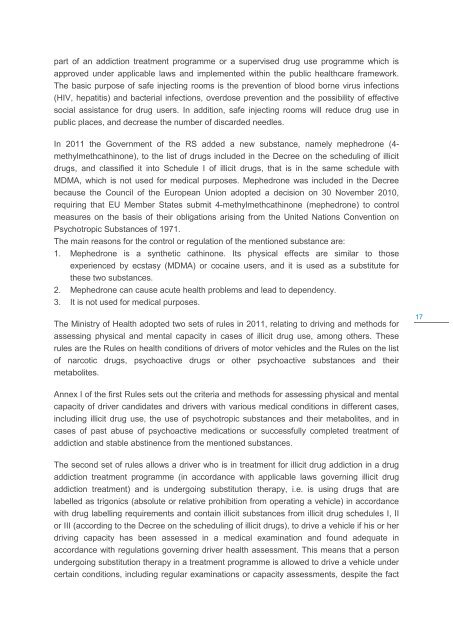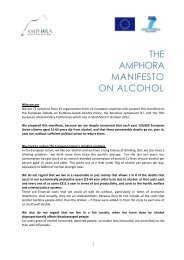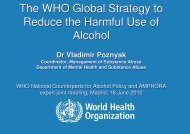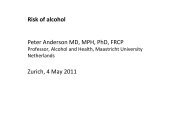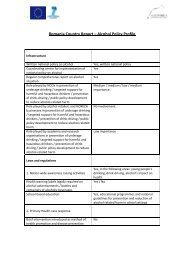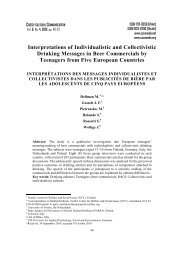Download full text - amphoraproject.net
Download full text - amphoraproject.net
Download full text - amphoraproject.net
Create successful ePaper yourself
Turn your PDF publications into a flip-book with our unique Google optimized e-Paper software.
part of an addiction treatment programme or a supervised drug use programme which isapproved under applicable laws and implemented within the public healthcare framework.The basic purpose of safe injecting rooms is the prevention of blood borne virus infections(HIV, hepatitis) and bacterial infections, overdose prevention and the possibility of effectivesocial assistance for drug users. In addition, safe injecting rooms will reduce drug use inpublic places, and decrease the number of discarded needles.In 2011 the Government of the RS added a new substance, namely mephedrone (4-methylmethcathinone), to the list of drugs included in the Decree on the scheduling of illicitdrugs, and classified it into Schedule I of illicit drugs, that is in the same schedule withMDMA, which is not used for medical purposes. Mephedrone was included in the Decreebecause the Council of the European Union adopted a decision on 30 November 2010,requiring that EU Member States submit 4-methylmethcathinone (mephedrone) to controlmeasures on the basis of their obligations arising from the United Nations Convention onPsychotropic Substances of 1971.The main reasons for the control or regulation of the mentioned substance are:1. Mephedrone is a synthetic cathinone. Its physical effects are similar to thoseexperienced by ecstasy (MDMA) or cocaine users, and it is used as a substitute forthese two substances.2. Mephedrone can cause acute health problems and lead to dependency.3. It is not used for medical purposes.The Ministry of Health adopted two sets of rules in 2011, relating to driving and methods forassessing physical and mental capacity in cases of illicit drug use, among others. Theserules are the Rules on health conditions of drivers of motor vehicles and the Rules on the listof narcotic drugs, psychoactive drugs or other psychoactive substances and theirmetabolites.17Annex I of the first Rules sets out the criteria and methods for assessing physical and mentalcapacity of driver candidates and drivers with various medical conditions in different cases,including illicit drug use, the use of psychotropic substances and their metabolites, and incases of past abuse of psychoactive medications or success<strong>full</strong>y completed treatment ofaddiction and stable abstinence from the mentioned substances.The second set of rules allows a driver who is in treatment for illicit drug addiction in a drugaddiction treatment programme (in accordance with applicable laws governing illicit drugaddiction treatment) and is undergoing substitution therapy, i.e. is using drugs that arelabelled as trigonics (absolute or relative prohibition from operating a vehicle) in accordancewith drug labelling requirements and contain illicit substances from illicit drug schedules I, IIor III (according to the Decree on the scheduling of illicit drugs), to drive a vehicle if his or herdriving capacity has been assessed in a medical examination and found adequate inaccordance with regulations governing driver health assessment. This means that a personundergoing substitution therapy in a treatment programme is allowed to drive a vehicle undercertain conditions, including regular examinations or capacity assessments, despite the fact


